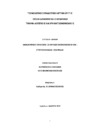| heal.creatorName | Καραμπάτσης, Ευστάθιος | el |
| heal.creatorName | Σέργης, Ευάγγελος | el |
| heal.creatorName | Χατζηγιαννάκης, Νικόλαος | el |
| heal.creatorName | Karampatsis, Efstathios | en |
| heal.creatorName | Sergis, Evangelos | en |
| heal.creatorName | Chatzigiannakis, Nikolaos | en |
| heal.publicationDate | 2019-03-28 | |
| heal.identifier.primary | http://hdl.handle.net/20.500.12688/9054 | |
| heal.abstract | Σκοπός : Σκοπός αυτής της εργασίας είναι η διερεύνηση της αναδιάρθρωσης της παραγωγής σε Ελλάδα και Ολλανδία την περίοδο 2010-2016, δεδομένης της οικονομικής κρίσης χρέους στην ευρωζώνη.
Μεθοδολογία : Αναλύουμε θεωρητικά τόσο τις οικονομικές κρίσεις όσο και τον τρόπο καταγραφής των σχετικών εισοδηματικών μεγεθών στο Ευρωπαϊκό Σύστημα Εθνικών Λογαριασμών (ESA-2010). Εμπειρικά χρησιμοποιούμε περιγραφική στατιστική για τον έλεγχο των θεωρητικών συμπερασμάτων μας
Ευρήματα : Διαπιστώσαμε ότι οι δύο χώρες χρησιμοποίησαν διαφορετικές οικονομικές πολιτικές στον τρόπο διαχείρισης της οικονομικής κρίσης. Σύμφωνα με το δείγμα μας, η μεγάλη εικόνα για την Ελλάδα, το 2016 συγκριτικά με το 2010, είναι ότι οι κλάδοι των κατασκευών και υπηρεσιών κατέγραψαν σημαντική μείωση της Ακαθάριστης Προστιθέμενης Αξίας (ΑΠΑ) τους, σε τρέχουσες βασικές τιμές, κατά 57% και 27% αντίστοιχα. Αντίθετα οι ΑΠΑ της βιομηχανίας και της μεταποίησης παρέμειναν περίπου ίδιες, ενώ του πρωτογενούς τομέα η ΑΠΑ μειώθηκε ελαφρά κατά 3,1%. Αποτέλεσμα αυτών ήταν η Ελληνική ΑΠΑ του πρωτογενούς και δευτερογενούς τομέων (εκτός κατασκευών) το 2016 να συνιστά το 29,1% του συνόλου (από 22,7% το 2010), ενώ οι κατασκευές και υπηρεσίες το 25,9% (από 30,2% το 2010). Όσον αφορά την Ολλανδία, σύμφωνα με το δείγμα μας, η μεγάλη εικόνα, το 2016 συγκριτικά με το 2010,είναι ότι ο κλάδος των υπηρεσιών κατέγραψε μεγάλη αύξηση της ΑΠΑ της, σε τρέχουσες βασικές τιμές, κατά 22%. Σημαντική ήταν η αύξηση της ΑΠΑ στη μεταποίηση και τον πρωτογενή τομέα κατά 15% και 10% αντίστοιχα. Η ΑΠΑ στη βιομηχανία (εκτός κατασκευών) παρέμεινε περίπου ίδια, ενώ η ΑΠΑ στις κατασκευές μειώθηκε κατά 6,6%. Αποτέλεσμα αυτών ήταν η Ολλανδική ΑΠΑ του πρωτογενούς και δευτερογενούς τομέων (εκτός κατασκευών) το 2016 να συνιστά το 29,3% του συνόλου (από 30,4% το 2010), ενώ οι κατασκευές και υπηρεσίες το 25% (από 23,9% το 2010).
Περιορισμοί / Συνέπειες : Ο βασικότερος περιορισμός αυτής της έρευνας είναι ότι το δείγμα μας δεν περιείχε το σύνολο των 64 κλάδων της ΑΠΑ που προβλέπει το ESA-’10. Άλλος περιορισμός είναι ότι τα συμπεράσματα μας αφορούν μόνο στην περιορισμένη δειγματική περίοδο. | el |
| heal.abstract | Purpose: The purpose of this study is to investigate the restructuring of production in Greece and the Netherlands over the period 2010-2016, given the economic debt crisis in the Eurozone.
Methodology: We analyze theoretically both the economic crises and the way in which the relative income figures are recorded in the European System of National Accounts (ESA-2010). We empirically use descriptive statistics to control our theoretical conclusions
Findings: We have stated that the two countries have used different economic policies in how to manage the economic crisis. According to our sample, the big picture for Greece in 2016 compared to 2010 is that the construction and service sectors recorded a significant reduction in their Gross Value Added (GVA) at current basic prices of 57% and 27 % respectively. On the other hand, the GVA of industry and manufacturing remained roughly the same, while the primary sector decreased slightly by 3.1%. As a result, the Greek GVA of the primary and secondary sectors (excluding construction) in 2016 constituted 29.1% of the total (from 22.7% in 2010), while construction and services were 25.9% (from 30, 2% in 2010). For the Netherlands, according to our sample, the big picture in 2016 compared to 2010 is that the service sector recorded a large increase in its GVA, at current base prices, by 22%. Significant was the increase of the GVA in manufacturing and the primary sector by 15% and 10%, respectively. The GVA in industry (excluding construction) remained roughly the same, while construction outputs declined by 6.6%. As a result, the Netherlands GVA of the primary and secondary sectors (excluding construction) in 2016 accounted for 29.3% of the total (from 30.4% in 2010), while construction and services accounted for 25% (from 23.9% in 2010)
Limitations / Consequences: The main limitation of this research is that our sample did not contain all 64 ESA-10 classifications of GVA. Another constraint is that our findings only concern the limited sampling period. | en |
| heal.language | Ελληνικά | el |
| heal.language | Greek | en |
| heal.academicPublisher | Τ.Ε.Ι. Κρήτης, Σχολή Διοίκησης και Οικονομίας (Σ.Δ.Ο), Τμήμα Λογιστικής και Χρηματοοικονομικής | el |
| heal.academicPublisher | T.E.I. of Crete, School of Management and Economics (SDO), Department of Accounting and Finance | en |
| heal.title | Αναδιάρθρωση παραγωγής σε περίοδο οικονομικής κρίσης: σύγκριση Ελλάδας-Ολλανδίας. | el |
| heal.title | Restructuring of production in a period of economic crisis: comparison between Greece and the Netherlands. | en |
| heal.type | Πτυχιακή Εργασία | el |
| heal.type | Bachelor thesis | en |
| heal.keyword | οικονομική κρίση, παραγωγή, Ελλάδα, Ολλανδία | el |
| heal.keyword | economic crisis, production, Greece, Netherlands | en |
| heal.access | free | el |
| heal.advisorName | Σταματόπουλος, Θεόδωρος | el |
| heal.advisorName | Stamatopoulos, Theodoros | en |
| heal.advisorID.email | stamth@staff.teicrete.gr | |
| heal.academicPublisherID | Τ.Ε.Ι. Κρήτης | el |
| heal.academicPublisherID | T.E.I. of Crete | en |
| heal.fullTextAvailability | true | el |
| tcd.distinguished | false | el |
| tcd.survey | false | el |


